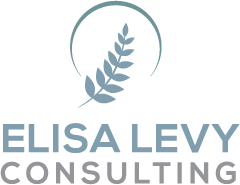Part I: Why is Change Difficult?
We are living through monumental times, on the brink of economic and political transformation that future generations will read about in text books. These national, and global transitions impact each of us on an individual level in real and tangible ways. Some of it feels exciting, yet much of it is anxiety provoking. Our lives, whether we like it or not, are changing before our eyes.
Understanding change is the first step to managing it. There are two categories of change, active and passive, and they impact us in very different ways. We choose active change by making decisions we hope will benefit us. We take a new job or move to a new place. Passive change is chosen for us and stems from events that are beyond our power, including the current housing and financial crisis or losing a job. The lines between active and passive change can blur, but there is one key difference between them: control. Active change involves a step to take control whereas passive change can feel like the loss of it.
When it comes to dealing with passive change, the goal is to find balance between gaining control and letting it go. The way to do that is to ask yourself a series of very important, but simple questions:
- Am I choosing to resist or respond? Typically, when first faced with a passive change we resist. We fight against it, get angry at the situation, look for ways to go back to where we were. It’s perfectly fine to do this, as long as we don’t get stuck there. Response is when we accept the change, and begin working with it, seeing it not so much as the enemy, but as a reality – or even an opportunity. You will know you are responding (as opposed to resisting), when you start to ask yourself the next question.
- What is my plan of action? Once we decide to accept the change, and respond to it, we must begin the practical work. To create a plan of action, begin by writing down the situation on the top of the page: “I’ve lost my job”, for example. Then, write down every option you can think of to deal with the situation. Once you have done that, choose one or two options that feel good to you. Make a “to do” list for each option, and attach a time line to each item on your list. You will have to modify the plan and steps as you go. If you hit a road block, do it again. Do the exercise as much and as often as you need to, in order to make sure you are moving forward.
- What if I were unhappy? Sigmund Freud believed that all human behavior stems from the need to seek pleasure and avoid pain. Our worries about the economy, job security, and our finances all funnel into the belief that we might be unhappy. Financial disaster equals unhappiness, as does the loss of our homes. What if the very worst were to happen? What if we were unhappy? Ask yourself that seriously, and consider what that means to you. For many of us, the fear of being unhappy is far worse than the actual feeling. In most cases, if the worst were to happen, we would still go on, we would figure out how to get back on track even if it meant choosing a lot of active change in our lives. Instead of asking “what if I were unhappy?” you may even try, “So what if I were unhappy?”
The well-known author Carolyn Myss, writes that human beings either act of “fear or faith.” In times of change, particularly the ones we haven’t chosen for ourselves, we always get to decide between the fear and faith. The fear never serves us, yet the faith in the outcomes and in ourselves is what ultimately will see us through even the hardest times.


